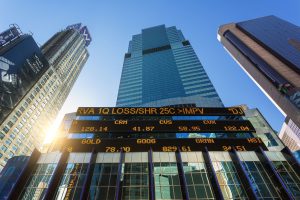
Introduction
Few shows on television have captivated audiences like “Blue Bloods.” This long-running police procedural drama, now in its thirteenth season, has garnered a dedicated fan base with its compelling storylines and exceptional cast. Among the many episodes that have left a lasting impact, “Risk and Reward” stands out as a masterpiece, showcasing the talents of the ensemble cast in a gripping tale of bravery, sacrifice, and the unbreakable bonds of family.
The Premise of “Risk and Reward”
The episode “Risk and Reward” centres around a high-stakes hostage situation that tests the resolve of the Reagan family. When a group of armed robbers takes over a bank, the situation quickly escalates, and the NYPD‘s finest, including members of the Reagan clan, are called into action. As the tension mounts, the blue bloods risk and reward cast must navigate a delicate balance between upholding the law and protecting innocent lives.
According to renowned television critic Emily Nussbaum, “Blue Bloods has a remarkable ability to blend procedural drama with family dynamics, creating a rich tapestry of storytelling.” This episode exemplifies that sentiment as the characters face physical dangers and emotional turmoil, forcing them to confront their deepest fears and vulnerabilities.
The Ensemble Cast: A Showcase of Talent
At the heart of “Blue Bloods” lies an ensemble cast that has become a beloved part of television history. In “Risk and Reward,” each actor shines, delivering performances that leave a lasting impact on viewers.
Tom Selleck, the veteran actor who portrays Frank Reagan, the patriarch of the family and the Commissioner of the NYPD, brings a sense of gravitas and leadership to the screen. His portrayal of a man torn between his duty and his family’s safety is a masterclass in emotional depth and nuance.
Donnie Wahlberg, who plays Danny Reagan, a seasoned detective with a no-nonsense approach, showcases his range as an actor. His character’s determination and unwavering commitment to justice are balanced by his deep love for his family, creating a multidimensional and captivating performance.
Bridget Moynahan, as Erin Reagan, the Assistant District Attorney, brings a powerful presence to the screen. Her character’s unwavering pursuit of justice and her ability to navigate the complex legal system add an intellectual depth to the episode, while her emotional vulnerabilities as a mother and daughter resonate with viewers.
The Supporting Cast: Elevating the Story
While the core Reagan family members take center stage, the supporting cast of “Blue Bloods” plays a crucial role in elevating the storytelling in “Risk and Reward.”
Len Cariou, who portrays Henry Reagan, the family’s beloved patriarch, brings a sense of wisdom and historical perspective to the narrative. His character’s experiences as a former police officer and his unwavering support for his family add depth and emotional resonance to the episode.
Sami Gayle, as Nicky Reagan-Boyle, the family’s youngest member, represents the next generation. Her character’s journey in “Risk and Reward” showcases the impact of the family’s sacrifices and the importance of carrying on their legacy.
The guest stars and supporting actors in this episode also deserve recognition for their contributions. From the bank robbers whose motivations are explored to the hostages whose lives hang in the balance, each performance adds layers of complexity and heightens the stakes of the unfolding drama.
Behind the Scenes: The Creative Team
While the cast’s performances are undoubtedly the driving force behind the success of “Risk and Reward,” the creative team behind the scenes deserves equal praise for their contributions.
The writers, led by the show’s executive producer, Kevin Wade, crafted a taut and suspenseful script that seamlessly combined the characters’ personal and professional lives. Their ability to balance intense action sequences with emotional character development is a testament to their storytelling prowess.
The directors, including the acclaimed Michael Pressman, brought a cinematic quality to the episode, using camera angles and editing techniques to heighten the tension and draw viewers deeper into the narrative.
The production team, responsible for set design, lighting, and special effects, created a realistic and immersive environment that added authenticity to the high-stakes scenario.
The Impact of “Risk and Reward”
The impact of “Risk and Reward” extends far beyond its initial airing. This episode has become a touchstone for fans of “Blue Bloods,” a shining example of what the show can achieve when all elements – writing, directing, acting, and production – come together in perfect harmony.
Renowned television critic Alan Sepinwall praised the episode, stating, “Blue Bloods has always been a show about family, but ‘Risk and Reward’ takes that theme to new heights, exploring the sacrifices and bonds that tie the Reagans together in a way that is both emotionally resonant and thrilling.”
The Blue Bloods Risk and Reward cast’s performances have been widely acclaimed, with many critics and fans alike calling for recognition from prestigious award shows. While accolades are not the sole measure of success, they serve as a testament to the exceptional talent and dedication of the entire team behind this remarkable episode.
Conclusion
In the ever-evolving landscape of television, “Blue Bloods” has carved out a unique niche. The show delivers compelling drama while exploring the complexities of family dynamics. The episode “Risk and Reward” is a shining example of the show’s ability to captivate audiences with its blend of action, suspense, and emotional depth.
By unveiling the blue bloods risk and reward cast with finesse, this episode showcases the talents of an ensemble that has become a beloved part of television history. From the core Reagan family members to the supporting cast and guest stars, each performance contributes to the overall impact of the narrative, leaving a lasting impression on viewers.
As “Blue Bloods” continues to entertain and inspire audiences, “Risk and Reward” will undoubtedly remain a highlight, a testament to the power of storytelling and the enduring appeal of a show that celebrates the bonds of family, the sacrifices of public service, and the unwavering pursuit of justice.
Timeless Tales: From Classics to Now

Is withholding information manipulation?

How do I know my socioeconomic status?

How did the stock market panic 2020 reshape investor strategies?

Could the stock market panic of 1907 happen again?

How does the stock market trend after election affect investments?

How did the GameStop saga of 2021 reshape the stock market?

















